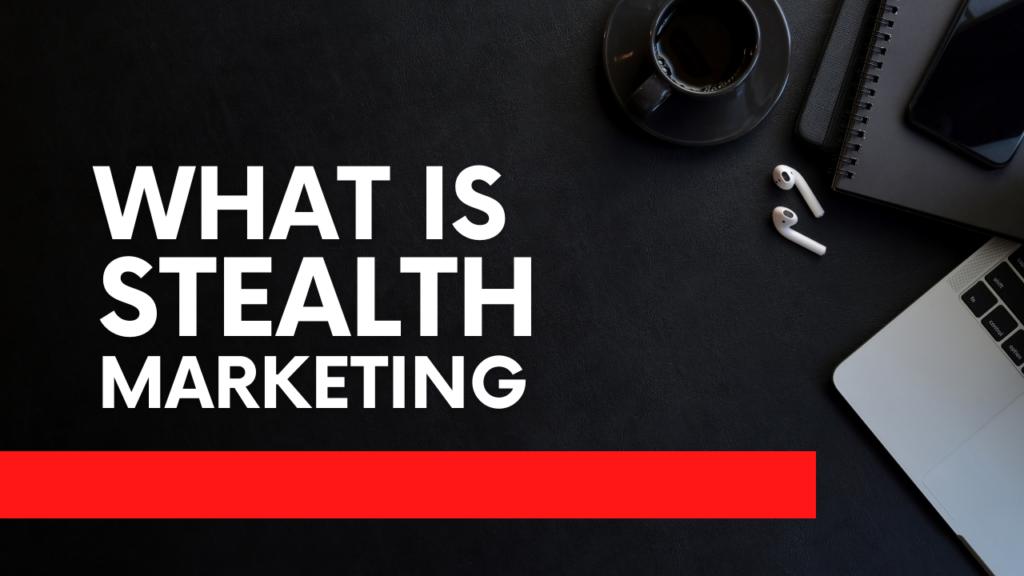Introduction to Stealth Marketing
Definition of Stealth Marketing
Stealth marketing, also known as undercover or buzz marketing, is a strategy used by companies to subtly promote their products or services without the consumer realizing they are being marketed to. The primary objective of stealth marketing is to generate buzz or create interest among consumers in a way that feels organic and less intrusive compared to traditional advertising channels.
Brief overview of its evolution
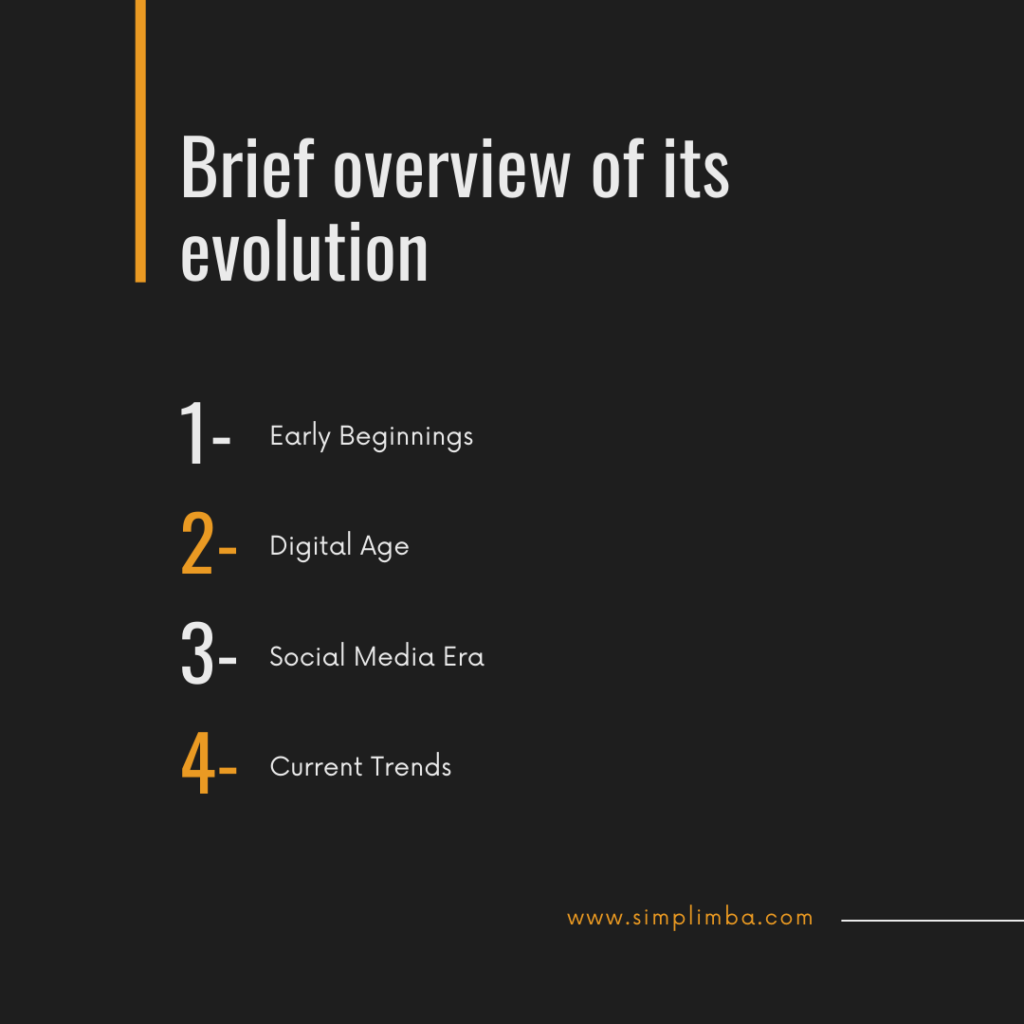
Early Beginnings: Stealth marketing dates back to the mid-20th century with the rise of product placement in television and films. While not explicitly promoting the product, its inclusion in popular media helped create awareness and interest.
Digital Age: With the advent of the internet, stealth marketing evolved and took on new forms. The concept of ‘viral marketing‘ became popular in the late 1990s with companies creating unique, engaging content that could easily be shared online.
Social Media Era: The rise of social media platforms in the mid-2000s gave stealth marketing another platform to operate. Influencers started to subtly include products in their posts, creating a sense of aspiration and desire among their followers.
Current Trends: Today, stealth marketing is often integrated into a broader marketing strategy. Companies use a combination of viral marketing, influencer partnerships, and innovative online content to create buzz around their products or services.
The Psychology Behind Stealth Marketing
Understanding Consumer Behavior
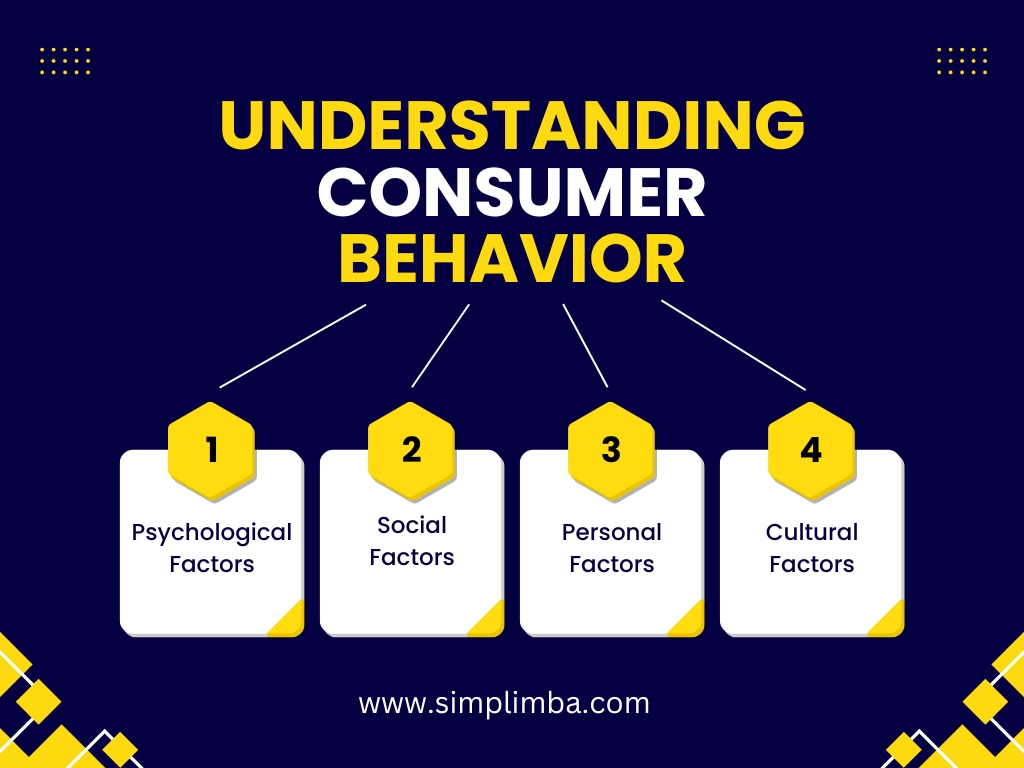
Consumer behavior refers to the study of how people make decisions to spend their available resources (time, money, effort) on consumption-related items. It involves understanding what they buy, why they buy it, when they buy it, where they buy it, how often they buy it, and how often they use it.
Psychological Factors: These include the individual’s motivations, attitudes, perceptions, learning, and personality. For example, consumers are more likely to purchase a product that they perceive as necessary or beneficial to them. Understanding these psychological factors can help marketers to tailor their strategies to meet consumers’ needs and wants.
Social Factors: These involve the influence of social interactions on consumer behavior. They include the individual’s family, social roles, and status. For instance, people often buy products or brands recommended by their friends or family members.
Personal Factors: Personal factors include an individual’s age, occupation, lifestyle, personality, and self-concept. For example, a young professional may be more likely to buy high-end electronics than a retiree on a fixed income.
Cultural Factors: These include the individual’s culture, subculture, and social class, which can significantly impact their buying decisions. For example, a person from a high social class may be more likely to buy luxury goods.
The Power of Subliminal Messaging
Subliminal messaging is a technique used in marketing and advertising to communicate with consumers below the level of conscious awareness.
Theory of Subliminal Messaging: The theory behind subliminal messaging is that it can influence consumer behavior without the consumer being aware of it. It is based on the idea that the unconscious mind can pick up and process information without the conscious mind’s active engagement.
Effectiveness of Subliminal Messaging: Studies have shown mixed results concerning subliminal messaging’s effectiveness. Some research has found that it can influence attitudes and behavior, while others have found no effect. However, it’s generally accepted that subliminal messaging can have a small impact on consumers, especially when it’s congruent with their existing attitudes or behaviors.
Ethical Considerations: The use of subliminal messaging in advertising is a controversial topic due to ethical concerns. While it can be an effective tool for marketers, it raises questions about manipulation and the consumer’s right to be aware of the messages they are being exposed to.
Examples of Subliminal Messaging: Examples of subliminal messaging in advertising include hidden images or text in advertisements, messages in music or films that can be heard or seen subconsciously, and even using certain colors or design elements to evoke specific feelings or associations.
Why do Industries Resort to Stealth Marketing?
Exploring various industry use cases
Technology Industry: Stealth marketing in the technology industry is quite common. Companies often use stealth marketing tactics to generate buzz about their upcoming products. Apple Inc., for instance, has been known to leak information about their products to create anticipation before their official release. The benefit of this tactic is that it allows the company to gauge public interest and adjust its marketing strategies accordingly. However, the downside is that if the product doesn’t live up to the hype, it can cause disappointment among consumers and potentially harm the company’s reputation.
Entertainment Industry: In the entertainment industry, stealth marketing is used to create intrigue and anticipation for upcoming films, TV shows, or music releases. For example, film production companies often release teaser trailers with minimal information to spark interest. The advantage is that it can generate excitement and word-of-mouth promotion, but the downside is similar to the technology industry, where failure to meet expectations can lead to negative reception.
Fashion Industry: The fashion industry utilizes stealth marketing through tactics such as ‘celebrity seeding,’ where they give away products to influencers or celebrities in hopes of them being seen using or wearing them. This strategy can significantly increase brand visibility and desirability. However, the downside is the possibility of backlash if the audience perceives the promotion as inauthentic.
The advantages and limitations of stealth marketing
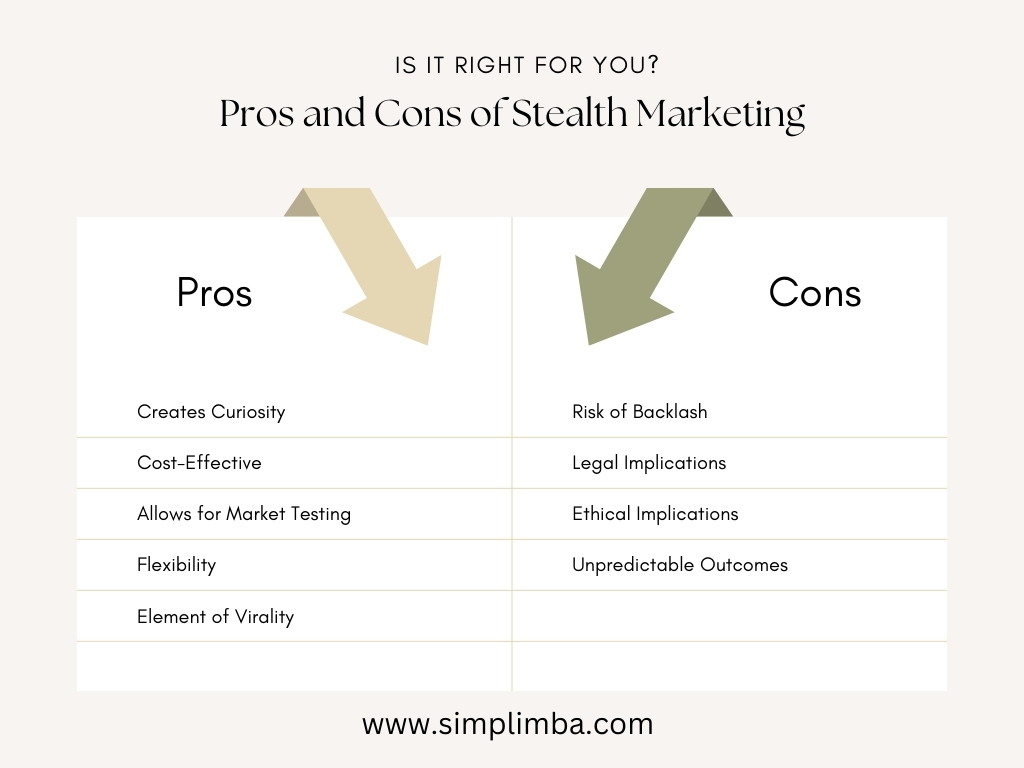
Advantages of Stealth Marketing
Creates Curiosity: Stealth marketing can generate curiosity among consumers, making them more interested in the product or service. This curiosity often translates into increased sales and greater brand awareness.
Cost-Effective: Compared to traditional advertising methods, stealth marketing can be more cost-effective. This is because it often relies on word-of-mouth and social sharing, which require minimal financial investment.
Allows for Market Testing: Stealth marketing can provide valuable insights into market response before officially launching a product or service. This can help businesses make necessary adjustments to optimize success.
Disadvantages of Stealth Marketing
Risk of Backlash: Stealth marketing can backfire if consumers feel deceived once they realize they’ve been marketed covertly. This can harm a brand’s reputation and consumer trust.
Legal and Ethical Considerations: In some cases, stealth marketing can blur ethical lines and even violate regulations, leading to potential legal repercussions.
Unpredictable Outcomes: The secretive nature of stealth marketing makes it harder to control the messaging and outcomes. Misinterpretation or unintended negative reactions can significantly impact the brand negatively.
Remember, while stealth marketing can offer several advantages, businesses must carefully consider the potential pitfalls and consumer perceptions to ensure successful implementation. Planning and transparency, while maintaining some level of mystique, can help balance the benefits and drawbacks of stealth marketing.
10 Key Strategies of Stealth Marketing
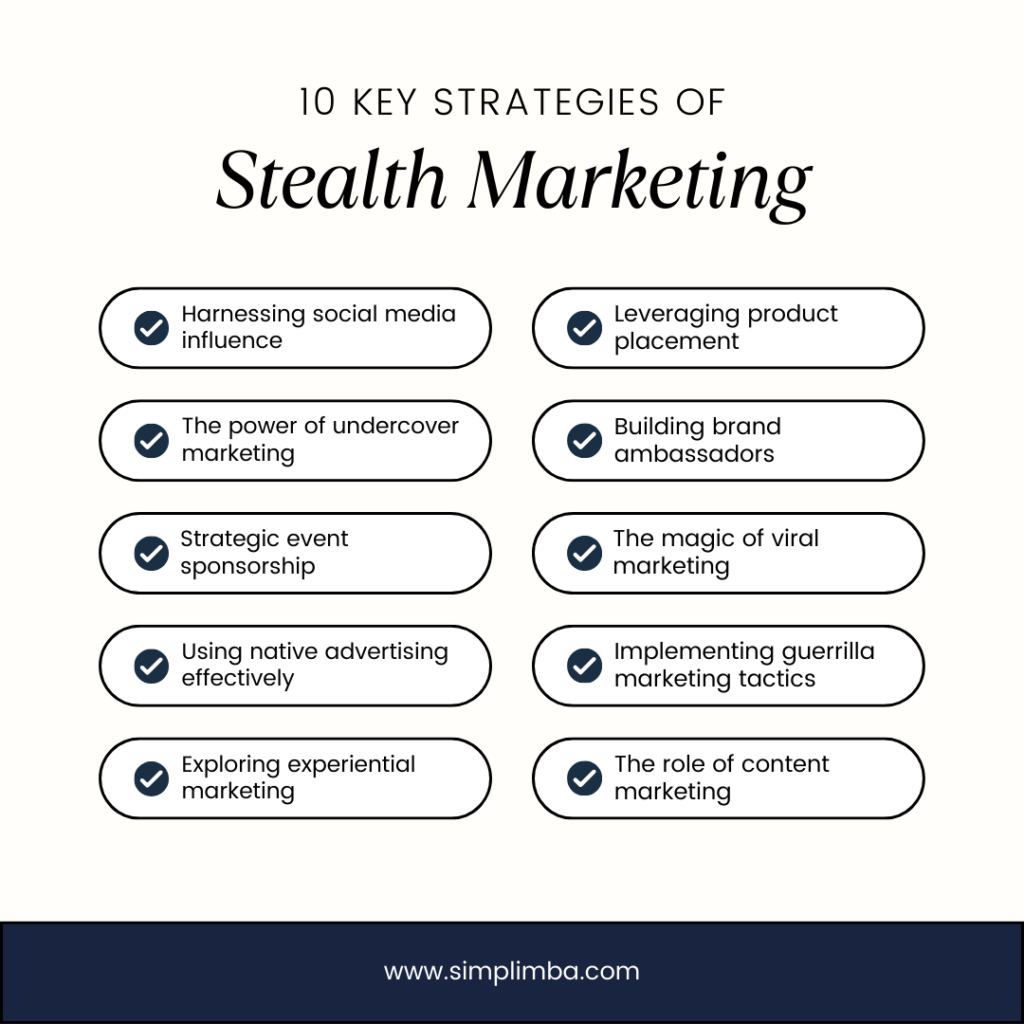
Harnessing social media influence: The digital era, marked by the rise of social media, has drastically changed the way businesses market their products and services. Marketers now harness the influence of social media platforms to reach their target audience. This strategy often involves engaging with influential personalities on these platforms to endorse or subtly promote a product or service. For example, a recent study found that 49% of consumers depend on influencer recommendations on social media.
Leveraging product placement: Product placement refers to the strategic placement of products within entertainment media to subtly promote them. A seminal work by Gupta and Lord demonstrated that product placement in films can increase brand recall and recognition. This stealth marketing strategy is most effective when the product is seamlessly integrated into the storyline.
The power of undercover marketing: Also known as stealth marketing, this involves promotions that do not initially appear to be marketing. Often, marketers will present a product or service as part of a non-promotional event or environment. A study by Kaikati and Kaikati (2004) highlights the effectiveness of undercover marketing but also cautions marketers about the ethical implications of this practice.
Building brand ambassadors: Brand ambassadors are individuals who represent and promote a brand within their circles of influence. They could be celebrities, employees, customers, or influencers who genuinely admire the brand. Harrigan found that brand ambassadors can significantly increase brand visibility, credibility, and customer loyalty.
Strategic event sponsorship: This involves sponsoring events that align with a brand’s image and values. Cornwell noted that event sponsorship could enhance brand recognition and customer loyalty, especially when the event’s audience matches the brand’s target market.
The magic of viral marketing: This strategy involves creating content that is so compelling that it is widely shared among users on social media platforms. Berger and Milkman found that content that evokes high-arousal emotions (like awe, anger, or humor) is more likely to go viral.
Using native advertising effectively: Native advertising refers to ads that match the form, feel, and function of the media format in which they appear. In an online context, these could be sponsored posts or articles that blend with the regular content. A study by Wojdynski and Evans suggested that native ads could be more effective than traditional ads in gaining customer attention and engagement.
Implementing guerrilla marketing tactics: Guerrilla marketing involves unconventional, innovative, and low-cost marketing tactics that aim to achieve maximum exposure for a product or service. Levinson and Rubin postulated that these tactics could yield substantial returns even for businesses with limited marketing budgets.
Exploring experiential marketing: This strategy involves immersing customers in a memorable live experience that enhances their relationship with the brand. Schmitt identifies five types of experiences that can be used in this strategy: sense, feel, think, act, and relate experiences.
The role of content marketing: Content marketing involves creating and sharing valuable content to attract and retain a clearly defined audience. Pulizzi emphasizes that consistently delivering high-quality, relevant, and valuable content to users can drive profitable customer action.
Impact of Stealth Marketing on Consumer Behavior
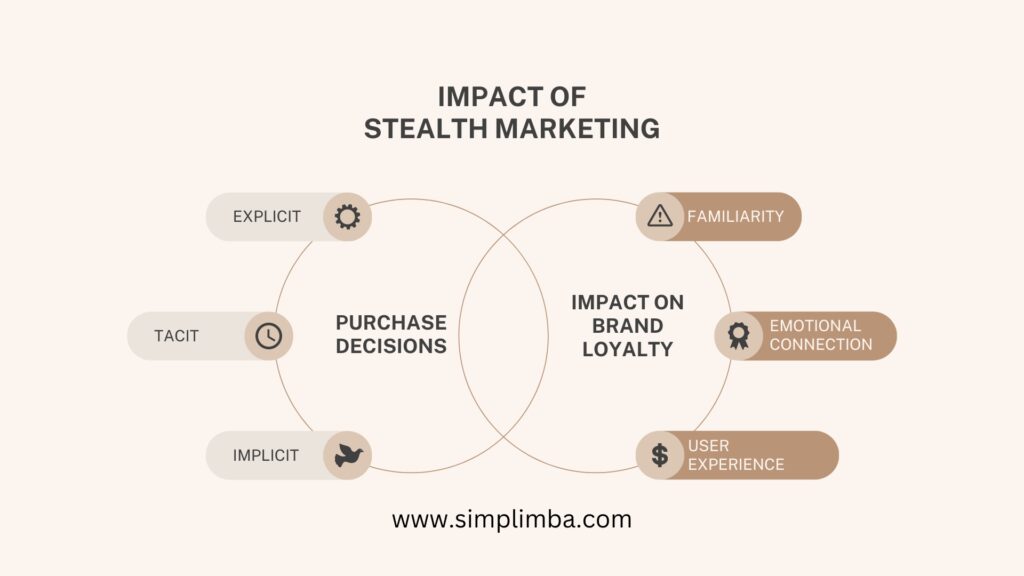
Influence on purchasing decisions
The impact of stealth marketing tactics on consumer purchasing decisions is substantial. Stealth marketing, also known as undercover or buzz marketing, involves promoting a product or service to consumers without them realizing they’re being marketed to. This can be achieved through product placement in films and TV shows, influencer endorsements on social media, or word-of-mouth campaigns.
Implicit Impact: Stealth marketing can subconsciously influence consumers’ purchasing decisions. Consumers may not realize that their choice is swayed by the subtle marketing messages they’ve encountered. This can be explained using the Mere Exposure Effect, a psychological phenomenon where individuals develop a preference for something simply because they are familiar with it (Zajonc, 1968). When consumers are repeatedly exposed to a product in a non-promotional context, they may become more likely to choose that product when making a purchasing decision.
Explicit Impact: In some instances, consumers may be consciously aware of the marketing tactics but still be influenced. For example, consumers may be aware that an influencer is endorsing a product because they were paid, but if they trust and admire the influencer, they may still be more likely to purchase the product.
Promoting brand loyalty
Stealth marketing can also play a crucial role in promoting brand loyalty, which is a consumer’s commitment to repurchase or continue using a particular brand (Oliver, 1999).
Familiarity and Trust: Stealth marketing can foster familiarity and trust with a brand. By integrating products into consumers’ everyday life experiences, such as through influencer endorsements or product placements, consumers may feel a deeper connection with the brand. This sense of familiarity and trust can promote brand loyalty.
Emotional Connection: Stealth marketing can also forge an emotional connection between consumers and brands. For example, when a favorite character in a TV show uses a particular brand, consumers may feel an emotional attachment to that brand, which can foster loyalty.
User Experience: Lastly, stealth marketing can enhance user experience by providing a seamless integration of products into consumers’ lifestyles. This integration can improve consumers’ perception of the brand’s utility, thus promoting brand loyalty.
Ethical Considerations in Stealth Marketing
The fine line between persuasion and deception
Persuasion Vs. Deception: Persuasion in marketing refers to the strategies used to convince potential customers about the value of a product or service. Deception, on the other hand, involves presenting false or misleading information to make a product or service appear more appealing. While persuasion is generally considered ethical in marketing, deception is often deemed unethical.
Impact on Consumer Trust: Deceptive marketing tactics can undermine consumer trust, which can have long-term negative effects on a brand’s reputation and customer relationships. On the contrary, persuasive marketing built on truthful and accurate information can enhance customer trust and loyalty.
Regulatory Guidelines: Various regulatory bodies like the Federal Trade Commission (FTC) in the U.S. have specific guidelines that differentiate between acceptable persuasive tactics and unacceptable deceptive practices. For example, a claim can be considered deceptive if it is likely to mislead consumers acting reasonably under the circumstances, and it is material or important to a consumer’s decision to buy or use the product.
Legal implications
Legal Consequences of Deceptive Marketing: There are numerous laws and regulations in place that penalize deceptive marketing practices. Penalties can range from fines to business closure. In some cases, offenders may even face jail time.
Class Action Lawsuits: Companies engaged in deceptive marketing practices can also face class action lawsuits from consumers who have been misled. These lawsuits can result in significant financial losses and damage to the company’s reputation.
Compliance and Oversight: It is crucial for businesses engaging in stealth marketing to ensure compliance with all relevant laws and regulations. This often requires an investment in legal oversight and regular audits to ensure all marketing practices align with the necessary legal and ethical standards.
Case Studies: Successful Stealth Marketing Campaigns
Case Study One: Sony Ericsson’s Fake Tourist Campaign (2002)
Sony Ericsson initiated a stealth marketing campaign in 2002 to promote their T68i mobile phone. They hired actors in major cities around the world to ask passers-by to take their pictures. This strategy successfully brought the product, which came equipped with a digital camera, to the attention of the public.
Concept: This campaign relied upon the idea of ‘accidental discovery’. The actors presented themselves as tourists asking for help, thus giving the person assisting them the opportunity to ‘discover’ the phone’s camera feature.
Outcome: Although some criticism arose when the campaign was revealed, the overall public reaction was generally positive, leading to increased brand visibility and product sales.
Analysis: The success of this campaign is attributed to the emotional connection established between the consumer and the product during their ‘happy accident’ discovery. The downside of this method, however, is the potential backlash if the company is perceived as deceptive.
Case Study Two: P&G’s Tremor and Vocalpoint Campaign (2001)
Procter & Gamble created two word-of-mouth campaigns, Tremor and Vocalpoint, targeting teenagers and mothers respectively. The campaigns relied on consumers to share information about P&G products with their peers.
Concept: These campaigns used the influential power of peer groups. Participants received free product samples and were encouraged to share their experiences with their network.
Outcome: The campaigns were successful in generating buzz around P&G’s products. Research indicated that recommendations from peers significantly influence purchasing decisions.
Analysis: P&G’s campaigns capitalized on the trust established in peer groups to promote their products. The risk of this method is if the products do not live up to the hype, it may lead to negative publicity.
Case Study Three: Hotmail’s PS: I Love You Campaign (1996)
Hotmail incorporated a small tagline at the bottom of every email sent through its platform: “PS: I love you. Get your free email at Hotmail.”
Concept: This campaign relied on the principle of ‘viral marketing’. Each email sent through Hotmail acted as a free advertisement, reaching a new potential user.
Outcome: The campaign contributed significantly to Hotmail’s rapid growth. Within 18 months, Hotmail had accrued over 8.5 million subscribers.
Analysis: The success of this campaign underscores the power of viral marketing in the digital age. The risk associated with this method is the potential for users to perceive this as spam, leading to a negative view of the brand.
Measuring the Success of Stealth Marketing Campaigns
Key Performance Indicators (KPIs)
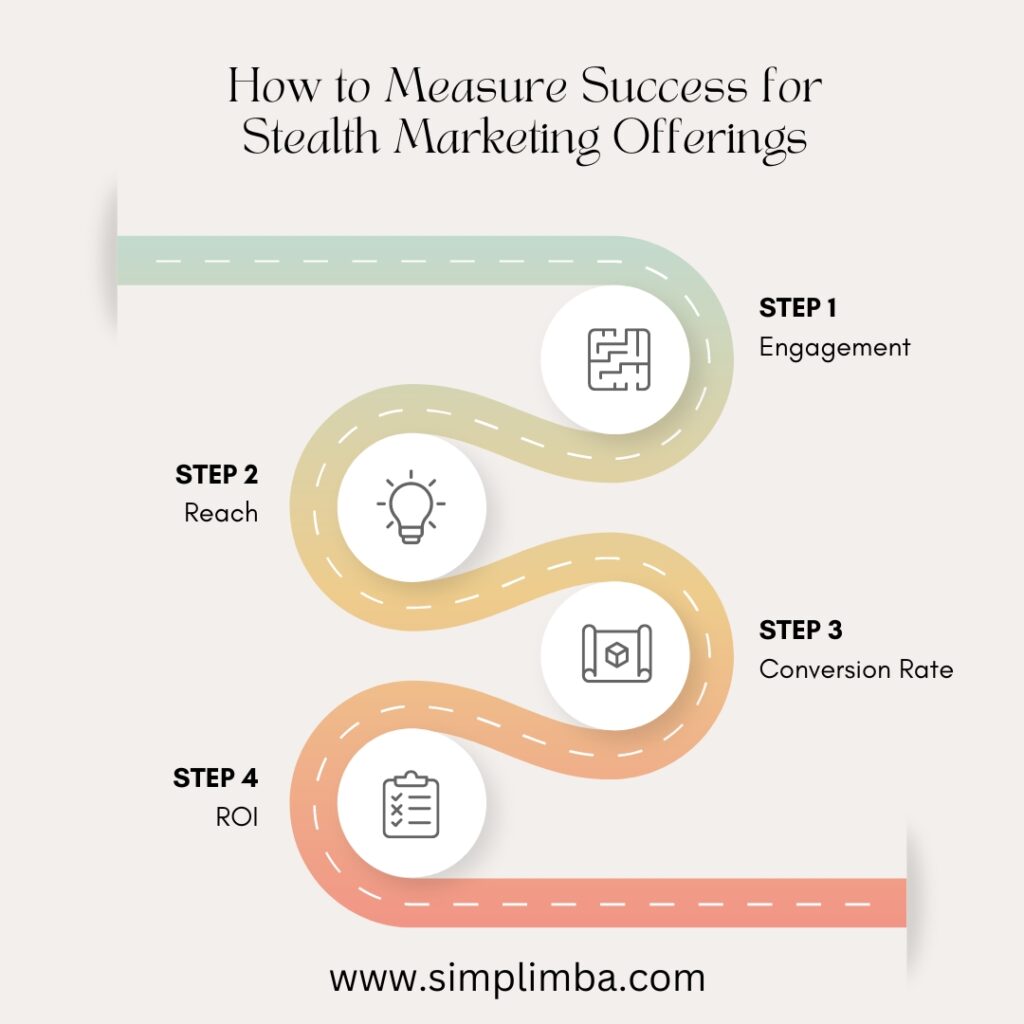
Key Performance Indicators (KPIs) are metrics that measure the effectiveness of a campaign. For stealth marketing, the following KPIs can be particularly relevant:
Engagement: This metric measures how much and how often consumers interact with a stealth marketing campaign. It could be quantified by the number of likes, shares, comments, and mentions on social media platforms, or the number of click-throughs on a website or an email campaign.
Reach: This KPI assesses the number of people exposed to the campaign. In stealth marketing, this can be challenging to gauge as the campaign is often subtly embedded within regular content. The use of analytics tools can provide estimates, such as the total number of views or impressions a campaign receives.
Conversion Rate: This is the percentage of consumers who complete the desired action as a result of the marketing campaign, such as making a purchase, registering for a service, or subscribing to a newsletter. In the case of stealth marketing, since the aim is to subtly influence the consumer’s perception and behavior, a higher conversion rate could indicate a more successful campaign.
Return on Investment (ROI): This measures the financial effectiveness of a campaign. It’s calculated by dividing the net profit by the total cost of the campaign and multiplying by 100 to get a percentage. For stealth marketing campaigns, this can be complex to calculate, as the indirect nature of the campaign can make it difficult to directly link sales to campaign activities.
Utilizing Analytics to Measure Influence
Modern analytics tools can provide invaluable insights into the effectiveness of stealth marketing campaigns. Here are some ways to utilize them:
Social Media Analytics: These tools can track engagement and reach, showing how consumers interact with stealth marketing content. They can also help identify key influencers and monitor how campaign messages are spread across different platforms.
Web Analytics: Tools like Google Analytics can track website traffic, user behavior, and conversion rates, providing insights into how stealth marketing campaigns are influencing online behavior.
Sentiment Analysis: This is a method used to measure consumer’s attitudes toward a brand or product. By analyzing comments, reviews, and posts, sentiment analysis can provide a qualitative measure of the stealth marketing campaign’s success.
Machine Learning Algorithms: In more advanced cases, machine learning can be used to predict consumer behavior based on past interactions with stealth marketing campaigns. This can help marketers tailor future campaigns for maximum effectiveness.
Samrat is a Delhi-based MBA from the Indian Institute of Management. He is a Strategy, AI, and Marketing Enthusiast and passionately writes about core and emerging topics in Management studies. Reach out to his LinkedIn for a discussion or follow his Quora Page

